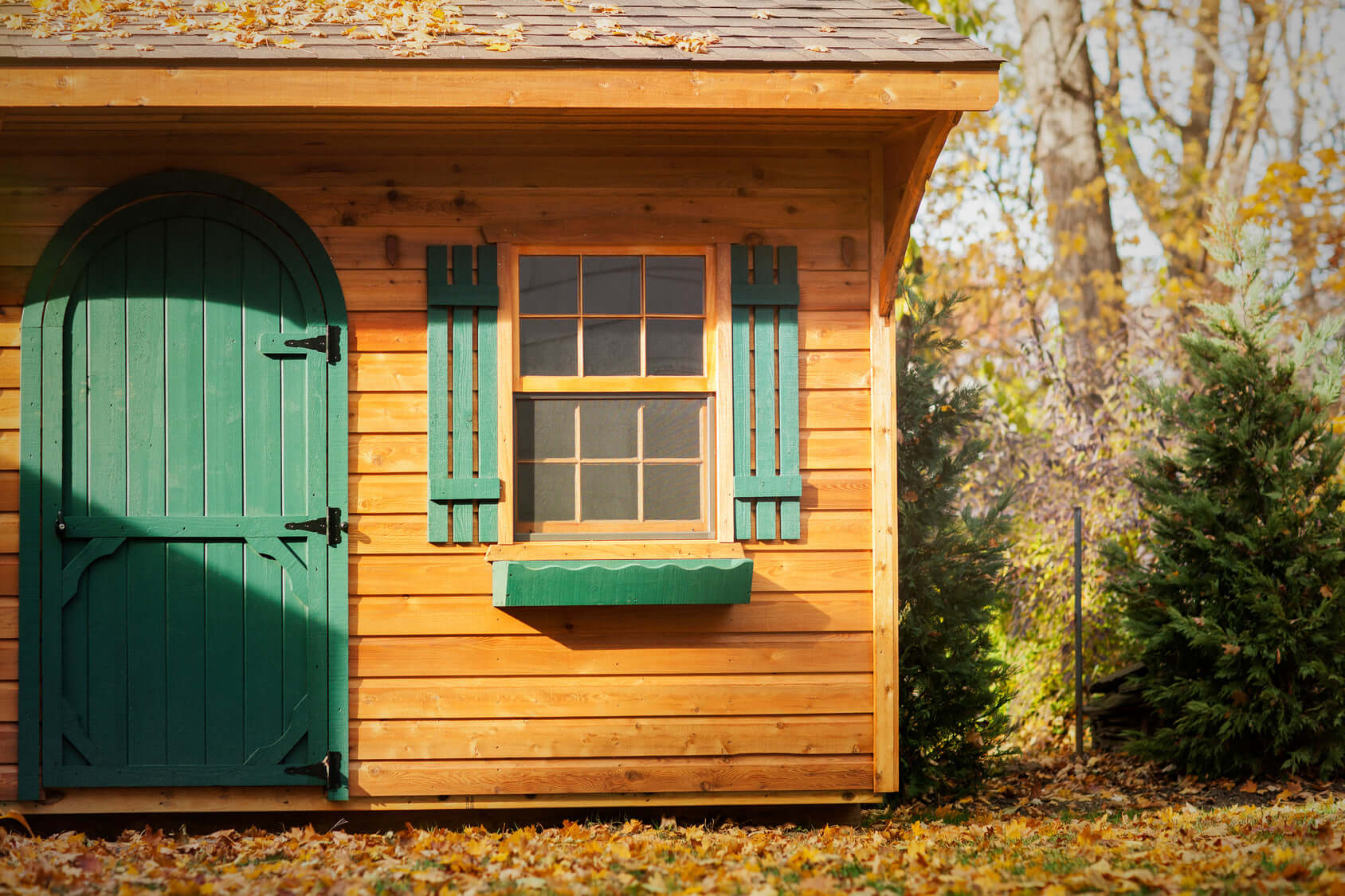Investing in a new garden shed is a significant decision for your home and garden, as it's expected to endure for many years. Therefore, understanding how to select the ideal shed that suits both your garden and storage needs is crucial.
To assist you in making a thoughtful choice, here are key considerations to ponder before purchasing the perfect shed for your requirements.
Determining the Right Shed Size: Begin by assessing the available space in your garden for a shed. This evaluation will help narrow down your options, guiding you toward the best shed size to meet your specific needs. Consider factors such as exterior maintenance space, clearance for doors/windows, and potential overhead obstacles like branches or wires.
Our recommendation is to lean towards a larger size if possible. Over time, you'll accumulate various garden tools and items, and running out of storage space can be frustrating.
Keep in mind that shed sizes are often rounded for marketing purposes. For instance, a shed labeled as 6’ x 4’ may actually measure 6’2” x 4’5”. Always check the detailed specifications, including any roof overhangs.
For smaller gardens, consider a corner shed to maximize outdoor living space. Planning the placement with string and stakes can be helpful.
Shed Usage: Before exploring shed options, consider the intended use. Depending on your needs, alternatives like a summer house, garden office, or log cabin may be worth considering.
Different uses demand different shed features. Storage for gardening supplies may require less robust features compared to securing valuable, bulky equipment. Factors such as security, double doors, and floor strength become crucial for storing items like chainsaws and ride-on lawn mowers.
Workshop sheds may need more space for comfortable use, while potting sheds benefit from extensive glazing for temperature regulation. Security sheds, for valuable tools, require considerations like minimal glazing and robust construction.
Understanding your shed's purpose helps narrow down choices for the best fit.
Best Sheds by Material - Wood, Metal, or Plastic: The material of your shed is a pivotal choice. Wooden sheds offer a traditional, customizable option, with variations like overlap, shiplap, and tongue-and-groove cladding.
- Overlap Cladding: Economical but may be prone to warping and gaps.
- Shiplap Cladding: Weather-tight finish with a scalloped front.
- Tongue and Groove Cladding: High-quality, tight join for better weather resistance.
Metal sheds are considered the most secure, featuring anti-rust finishes and often requiring minimal maintenance. Plastic sheds, while lightweight, have evolved to be strong, UV-protected, and available in various designs.
Roof Design: Selecting the right roof design depends on shed placement and aesthetic preferences.
- Apex Sheds: Classic option with a triangular point along the center, offering more headroom.
- Pent Sheds: Ideal for gardens with trees, lower profile, and sleek lines.
- Reverse Apex Roofs: Peak along the middle but with the door on one of the longer sides, suitable for optimized space use.
Flooring: Consider the type of floor based on what you plan to store. Wooden and plastic sheds usually come with floors, while metal sheds may require an optional extra purchase.
- OSB Floors: Common in cheaper sheds, reliable but may sag if exposed to moisture.
- Timber Boards or Tongue and Groove Flooring: Stronger, better protection against ground moisture.
Characteristics of a Best Insulated Shed: A well-insulated shed exhibits key features:
- Effective Temperature Control: Achieved through high-quality insulation materials.
- Air Sealed: Impeccable sealing to prevent drafts and maintain consistent internal temperature.
- Moisture Control: Proper ventilation to regulate moisture and prevent condensation.
- Energy Efficiency: Maximizes energy efficiency for a comfortable environment.
Level of Shed Maintenance Required: Consider the time you can dedicate to shed maintenance.
-
Wooden Sheds: Require treatment with wood preservative for rot and fungal decay prevention.
- Dip Treated Sheds: Need periodic retreating, recognizable by an orangey hue.
- Pressure Treated Sheds: Provide comprehensive protection without further treatment.
-
Metal and Plastic Sheds: Low maintenance; occasional cleaning with soapy water or a power washer.
Shed Security Required: Metal sheds are often considered the most secure, with advanced locking systems. Windowless sheds or those with high-level windows enhance security. Sturdy doors, hidden hinges, and tamper-proof screws deter unauthorized access.
Budget: Budget considerations are crucial. Plastic sheds are generally more affordable, but shed size and specifications impact the price. Wooden sheds' cost may vary based on cladding thickness and treatment.
Compare prices while considering inclusions, such as installation or flooring. Some sheds may offer these as optional extras.
Shed Accessories: Explore accessory options to optimize shed functionality, from shelves to solar power. Wood sheds offer flexibility for adding shelves and hooks, while metal and plastic sheds may have manufacturer-specific extras.
DIY Skills: Consider your DIY skills when choosing a shed. Plastic sheds are lightweight and easy to assemble, metal sheds are becoming easier to build, and wooden sheds fall in between. Manufacturers often provide installation services for those less confident in DIY.
Other Important Shed Buying Tips: When to Buy: There's no bad time to buy a shed, but consider these reasons:
- Shabby Shed: If your shed is deteriorating, now is the chance to replace it for better protection.
- Outgrown Small Shed: If your current shed is too small and inefficient, consider upgrading to a larger one.
- First Shed: If you've acquired enough garden equipment to warrant a proper shed.
Shed Installation: Consider shed base options (concrete, paving slabs, wooden, or plastic grid) and check the existing base for suitability. Manufacturers may offer installation services, but ground preparation and base installation are typically separate.
If installing the shed yourself, choose a dry day and have helping hands. Some manufacturers provide an installation service for a hassle-free experience.
Concluding Thoughts: Choosing the best shed involves several considerations, including size, material, insulation, maintenance, security, budget, and DIY skills. The right selection enhances functionality and aesthetic appeal in your outdoor space.

